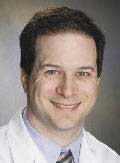Investigational Agents May be Effective for Resistant GIST
CHICAGO-Two new agents-an inhibitor of heat shock protein 90 and an inhibitor of insulin-like growth factor 1 receptor-appear promising for treating gastrointestinal stromal tumors that are resistant to available tyrosine kinase inhibitors, researchers said at ASCO 2008.
Inhibitors of HSP90 and IGF-1R may be able to circumvent resistance to current therapies for GIST patients.
CHICAGO-Two new agents-an inhibitor of heat shock protein 90 and an inhibitor of insulin-like growth factor 1 receptor-appear promising for treating gastrointestinal stromal tumors that are resistant to available tyrosine kinase inhibitors, researchers said at ASCO 2008.
IPI-504
A team led by Andrew J. Wagner, MD, PhD, of the Dana-Farber Cancer Institute, conducted a phase I trial of IPI-504 (retaspimycin, Infinity Pharmaceuticals and MedImmune), a selective, water-soluble inhibitor of HSP90, in patients with metastatic GIST or other soft-tissue sarcomas that were resistant to tyrosine kinase inhibitors (abstract 10503). In all, 45 patients with GIST and 18 with other sarcomas were treated.

“Further study of IPI-504 in refractory GIST is warranted. It should be explored as combination therapy as well...” - Dr. Andrew Wagner
Results identified 400 mg/m2 given twice weekly for 2 weeks on, 1 week off, as the recommended dose and schedule for further testing, Dr. Wagner reported. The leading adverse events were fatigue, headache, nausea, and diarrhea, which were grade 1-2 in most cases, and the leading laboratory abnormalities were reversible elevations of liver function tests.
Among 22 GIST patients treated with the drug in doses ranging from 90 to 400 mg/m2 and assessed by PET imaging on day 11 of the first cycle, 16 (73%) had a decrease in SUVmax, with 5 (23%) meeting EORTC criteria for a partial response.
Among 36 GIST patients treated with those doses and assessed radiographically with RECIST criteria at 6 weeks, 1 (3%) had a partial response, and 24 (67%) had stable disease. Median progression-free survival for all doses was 12 weeks.
“HSP90 inhibition represents a novel strategy to overcome clinical resistance to tyrosine kinase inhibitors in refractory GIST,” Dr. Wagner concluded. “Further study of IPI-504 in advanced, kinase- inhibitor-refractory GIST is warranted. It should be explored as combination therapy as well, with a kinase inhibitor.”
He noted that an international phase III trial of IPI-504 in this population should begin later this year.
NVP-AEW541
In another study, Andrew K. Godwin, PhD, of Fox Chase Cancer Center, and colleagues characterized response of GIST cells to NVP-AEW541 (NVP, Novartis), a small molecule inhibitor of the IGF-1R tyrosine kinase (abstract 10507).
He noted that wild-type tumors, which make up about 20% of adult GISTs and most pediatric ones, lack mutations of c-KIT and PDGF receptor alpha-the targets of imatinib (Gleevec)-and often have a poorer prognosis.
Initial Western blot analyses indicated that six of seven wild-type tumors overexpressed IGF-1R by more than 10-fold, relative to the average expression in 20 tumors having mutations of KIT or PDGF receptor alpha. Furthermore, by immunohistochemistry, all of 9 wild-type tumors were strongly positive for IGF-1R, whereas all of 16 mutant tumors were weakly positive or negative (P = .008).
Additional Western blot analyses showed that treatment with NVP inhibited signaling in the IGF-1R pathway as well as in the MAPK and AKT pathways in mutant cell lines (the only ones available at the time). However, the KIT pathway remained activated, Dr. Godwin noted.
NVP also decreased cell survival through induction of apoptosis. When the drug was combined with imatinib, the effect was additive but not synergistic.
Off Target Effects
Cell studies using a silencing RNA (siRNA) approach to knock down IGF-1R levels suggested that NVP has effects beyond those achieved by inhibiting the receptor, Dr. Godwin said (Tarn et al: PNAS, in press). “We see a growth effect by just knocking down the transcript and protein, but it’s not nearly as substantial as that seen with the drug itself, so we think there is some off-target effect,” he said.
Dr. Godwin speculated that genotyping will become increasingly important in treating GIST.

“We need clinical trials that focus on some of these wild-type markers and separate them from the mutant population.” - Dr. Andrew Godwin
“We see now that KIT mutations and the other ones being used are somewhat predictive of response to therapies,” he said. “But I also think that we need to start to look for some of these wild-type markers and use some of the things we are discovering to actually derive clinical trials that would focus on some of these wild-type markers and really separate them from the mutant population.”
He noted that trials of IGF-1R-targeted therapies are currently in development.
Commentary: Next Year?
“What’s interesting is we might be able to use IGF-1R immunohistochemistry as a way of helping us screen tumors and be smarter about doing genotyping,” said Christopher L. Corless, MD, PhD, of the Oregon Health & Science University, discussing Dr. Godwin’s findings on NVP. “I think that’s a very worthwhile pursuit.”
Although NVP inhibits multiple pathways besides IGF-1R, forthcoming silencing RNA results appear to support an important role of this pathway, Dr. Corless commented. “We have very good preliminary data to suggest that IGF-1R overexpression plays a role in at least some of the wild-type tumors,” he concluded. “I certainly look forward to seeing data from the clinical trials that are planned, perhaps next year here at ASCO.”